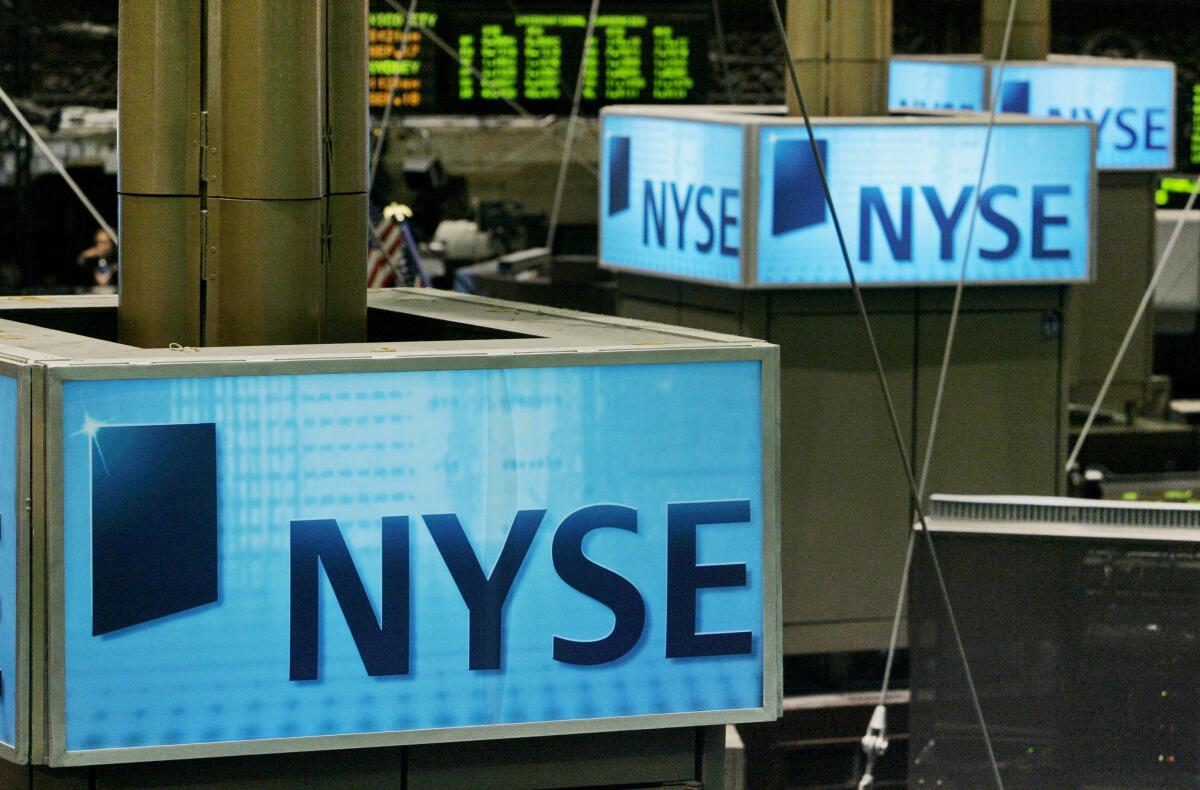Their companies’ stocks are doing great. So why are CEOs urging caution?

- Share via
Corporate America is working hard to keep the stock market from falling victim to high expectations.
Another round of rising quarterly profit reports helped drive the Standard & Poor’s 500 Index back to record levels, but in their earnings reports executives largely struck cautious tones on their outlooks. Just 40% of the firms that issued guidance have provided earnings outlooks that exceeded analysts’ expectations, according to Bank of America Corp. If the trend holds, it would be the smallest share since April 2020, when the onset of the pandemic was sowing unprecedented uncertainty.
The forecasts reflect nagging worries that the economy will cool as traders dial back the scale of the rate cuts they expect from the Federal Reserve this year, even though growth has consistently defied pessimistic forecasts. And with the stock rally leaving valuations hovering at high levels, executives have an increased incentive to indulge in the time-honored practice of lowering the bar — helping to ensure that their companies will easily exceed it.
“You have geopolitical risk, you have the election risk, you don’t know how the economy holds up in the face of a delayed effect of rate hikes, and the pace of cuts is still uncertain,” said Willie Delwhiche, strategist and founder at Hi Mount Research. “Put this together, and it benefits now probably more than ever to strike a cautious tone when providing an outlook.”
The actual results so far have offered little reason for worry. With quarterly reports in from more than 400 companies in the S&P 500 Index, the index is on track to post 7% year-over-year earnings growth, the most since the second quarter of 2022.
Still, individual corporate outlooks have been mixed. Among the U.S. firms that provided guidance last month, more than a third issued estimates that trailed analysts’ expectations, the most since March 2023, data compiled by Bloomberg Intelligence show. The share of those issuing a higher-than-expected profit forecast was 21% — the lowest since February 2022.
Take Deere & Co.: The agriculture-equipment maker cut its net-income guidance to a level that suggests this year’s earnings will amount to $27.20 per share, 4% below the consensus estimate, according to Bloomberg Intelligence. Or DoorDash Inc., whose guidance for full-year gross order value trailed the average analyst estimate at the midpoint.
To Jack Ablin, chief investment officer of Cresset Capital, a host of factors may affect U.S. companies’ outlooks this year, including the pace of rate cuts, the ability to pass along costs to consumers, the ease of accessing capital, geopolitics and the November U.S. presidential election.
The peril to companies that overpromise and underdeliver has been on display this earnings cycle, when investors quickly rewarded the stocks of firms that beat their estimates and punished those that fell short.
The S&P 500 companies that topped expectations outperformed the benchmark by 0.8% a day after the results, the most in a year, according to Blooomberg Intelligence. Those that missed on both the top-and bottom-line trailed the benchmark index by the most in five quarters.
The divergence made the life of active stock pickers easier, at least last month. Some 73% of large-cap active funds beat the Russell 1000 Index in January, the best start to a year for active fund managers since at least 1991, Bank of America’s data show.
For companies, that means the pressure to not just meet but exceed analysts’ estimates is even higher than it was before.
“It’s not an easy environment, with so many moving parts on a company-specific and macro front,” Ablin said. “The cost of guiding too high — and then disappointing investors if things don’t go as planned — is really high.”
More to Read
Inside the business of entertainment
The Wide Shot brings you news, analysis and insights on everything from streaming wars to production — and what it all means for the future.
You may occasionally receive promotional content from the Los Angeles Times.










